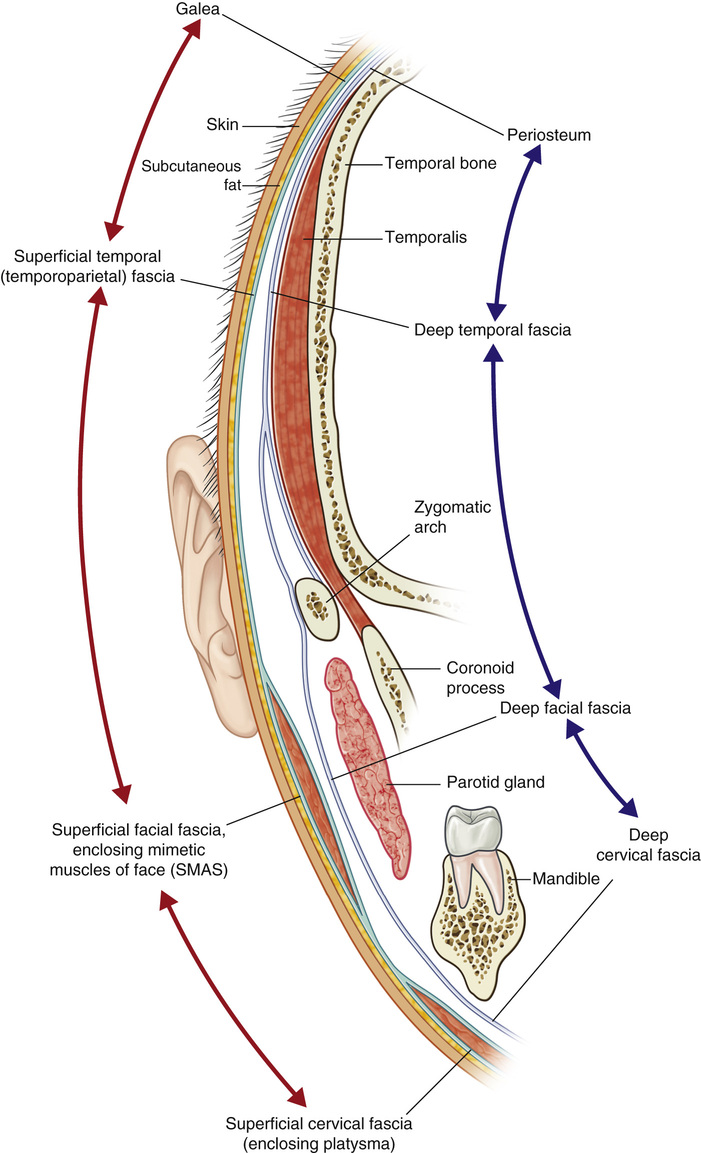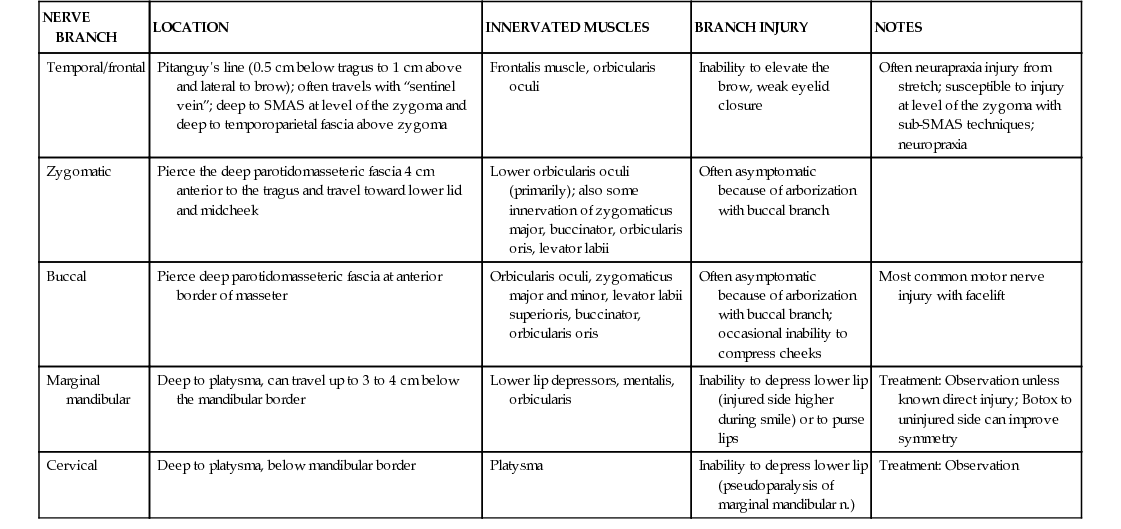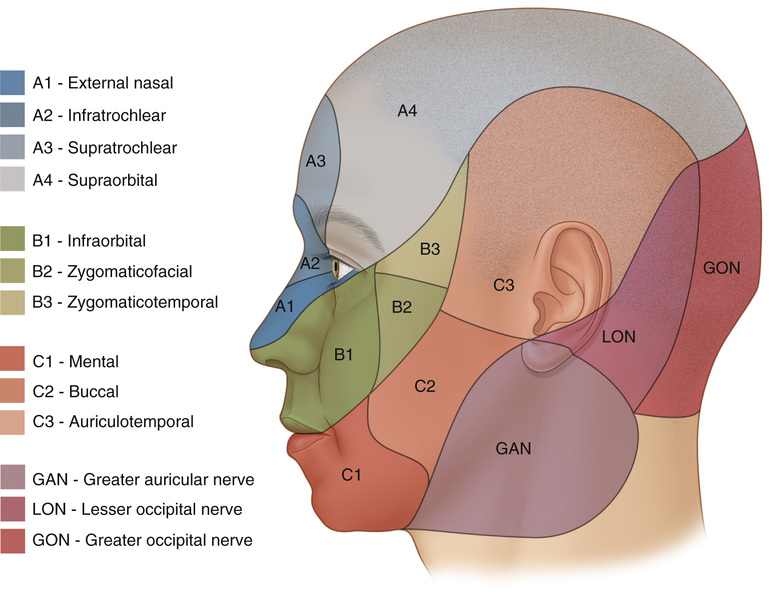1. Techniques (see Table 28.2 and Figures 28.5–28.10) Table 28.2 Facelift Techniques
Rhytidectomy and Neck Rejuvenation
Rhytidectomy
TECHNIQUE
DESCRIPTION
ADVANTAGES/DISADVANTAGES
Subcutaneous facelift
Dissection and tightening of excess skin only
Advantages: Safe, rapid recovery
Disadvantages: Recurrence of ptosis because tightening relies on skin tension alone
SMAS plication
Dissection in subcutaneous plane with suture plication of the SMAS over the parotid gland
Advantages: Relatively safe, long-lasting results without need for sub-SMAS dissection
Disadvantages: Potential loss of effect from suture failure
MACS lift
Limited preauricular/pretemporal hairline incision with skin elevation and purse-string suture of lower SMAS to deep temporal fascia (extended MACS lift places a 3rd suture in the SMAS to suspend the malar fat pad)
Advantages: Similar to SMAS plication, but firmer point of fixation to deep temporal fascia
Disadvantages: Similar to SMAS plication
Subcutaneous facelift with SMASectomy
Similar dissection as SMAS plication, but limited strip of SMAS is removed obliquely across the cheek, and the defect is closed primarily with sutures
Advantages: Allows for skin and SMAS to be moved in different vectors, more secure than plication, more rapid than sub-SMAS lifts
Disadvantages: Possible nerve injury
Deep plane facelift
Skin, fat, and SMAS are elevated in a single layer
Advantages: Long-lasting results, retaining ligaments are thoroughly released
Disadvantages: Potential for nerve injury, more complex than supra-SMAS techniques above
Subperiosteal facelift
Dissection of the midface in a subperiosteal plane; occasionally adds a lower lid or intraoral incision
Advantages: Deep to all critical structures, relatively short incision, no tension on skin, can combine rejuvenation of lower lid and brow
Disadvantages: Relatively complex procedure, limited effect on lower face/neck, and excess skin![]()
Stay updated, free articles. Join our Telegram channel

Full access? Get Clinical Tree


Rhytidectomy and Neck Rejuvenation
Chapter 28











